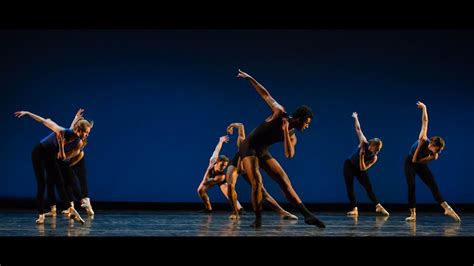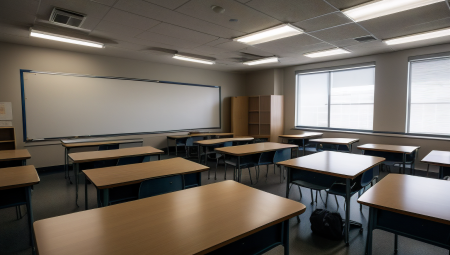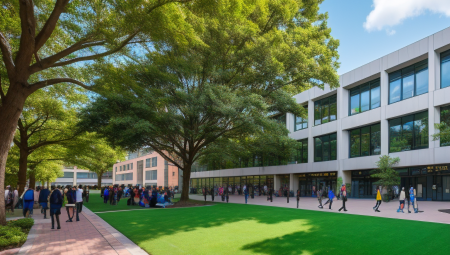Are you a passionate dancer looking to take your talent to the next level? Pursuing a dance program at a university in the US might just be the perfect opportunity for you. In this blog post, we will delve into the world of dance programs offered at various universities across the country. From understanding the curriculum and preparing for auditions to exploring scholarship opportunities and building connections in the industry, we will cover it all. Whether you’re interested in ballet, modern dance, or jazz, choosing the right program is crucial for your growth as a dancer. Join us as we explore the benefits of studying dance at a university, and discover the endless opportunities for internships and performances. We will also discuss how to strike a balance between academics and dance training and explore the career options available to dance graduates. So, get ready to find your rhythm and embark on a journey towards a successful career in the dance industry.
Table of Contents
Exploring dance programs in the US
When it comes to pursuing a career in dance, choosing the right program is crucial for your success. The United States offers a wide range of dance programs, from conservatories to universities, each with its own unique curriculum and focus. Exploring these programs gives aspiring dancers the opportunity to find the perfect fit for their individual goals and aspirations.
One of the first steps in exploring dance programs in the US is to research the various institutions offering dance degrees. From prestigious conservatories like Juilliard to comprehensive university programs, there are endless options to consider. Take the time to explore the different types of programs available and make note of the specific qualities that stand out to you.
Visiting campuses and attending open house events can also provide valuable insight into the atmosphere and culture of each program. Meeting with faculty members and current students can give you a better understanding of the opportunities and support available at each institution. Additionally, observing classes and performances can help you gauge the level of talent and dedication within the program.
As you explore dance programs in the US, it’s important to consider your long-term goals and the type of training that will best prepare you for success in the industry. Whether you’re interested in performance, choreography, or dance education, there are programs tailored to each specialization. By thoroughly exploring the options available, you can make an informed decision that aligns with your aspirations as a dancer.
Choosing the right dance program for you
When it comes to pursuing a career in dance, choosing the right program is crucial. Whether you’re interested in a conservatory-style program or a more traditional university setting, it’s important to consider your own goals, strengths, and weaknesses.
One of the first things to consider is the style of dance you want to study. Some programs may focus on a specific style, such as ballet, modern, or jazz, while others may offer a more diverse range of classes. It’s important to choose a program that aligns with your interests and goals as a dancer.
Another key factor to consider is the faculty and staff at the program. Research the instructors and their backgrounds to ensure that they have the experience and expertise to help you reach your potential as a dancer. Additionally, consider the size of the program and the student-to-faculty ratio to determine if you will receive individualized attention and support.
Finally, don’t forget to consider the location, cost, and overall reputation of the program. Decide if you prefer a program in a bustling city, or a more serene environment. Consider the costs and determine if the program offers scholarships or financial aid. And, of course, research the program’s reputation and success rate of its graduates in the dance industry.
The benefits of studying dance at a university
Studying dance at a university offers a wide range of benefits for aspiring dancers. One of the most compelling reasons to pursue a dance degree at a university is the opportunity to receive a comprehensive and well-rounded education in dance. University dance programs often provide students with a strong foundation in various dance techniques, as well as courses in dance history, choreography, and dance theory.
Additionally, studying dance at a university allows students to work closely with experienced and knowledgeable faculty members who can provide valuable guidance and mentorship. This type of personalized attention can be instrumental in helping students develop their technical skills, artistic vision, and overall understanding of the dance discipline.
Another benefit of studying dance at a university is the chance to collaborate with other talented and passionate individuals. University dance programs often foster a supportive and creative community that encourages students to explore new ideas, collaborate on projects, and push the boundaries of their artistic expression.
Furthermore, earning a dance degree from a reputable university can open doors to a wide range of career opportunities within the dance industry. Many university dance programs have established connections with professional dance companies, performance venues, and arts organizations, providing students with valuable networking and performance opportunities that can be instrumental in launching a successful career in dance.
Understanding the curriculum of dance programs
When considering a dance program, it’s crucial to understand the curriculum in order to make an informed decision about which program is the best fit for you. Curriculum refers to the structure and content of the program, including the specific courses, requirements, and opportunities for practical experience.
Each dance program has its own unique curriculum, so it’s important to carefully review and compare the offerings of different programs. Some programs may have a focus on a particular style of dance, while others may offer a more diverse range of dance styles and techniques. Understanding the curriculum can help you assess whether a program aligns with your personal dance goals and interests.
Additionally, understanding the curriculum can assist you in planning your academic and dance training schedule. For example, you may want to prioritize programs that have a strong emphasis on technique and performance if you are pursuing a career as a professional dancer. On the other hand, if you are interested in dance education or choreography, you may be looking for programs that offer courses in teaching methods and composition.
By thoroughly researching and understanding the curriculum of dance programs, you can ensure that you are making the best choice for your future dance career.
How to prepare for auditions and interviews
Preparing for auditions and interviews in the dance industry can be a daunting task, but with the right approach and mindset, it can also be an exciting opportunity to showcase your talent and passion. One of the first steps in preparing for auditions and interviews is to research the specific requirements and expectations of the programs or companies you are applying to. This can include understanding the style of dance they specialize in, the history of the organization, and any specific criteria for auditions or interviews.
Once you have a clear understanding of what is expected, it’s important to prepare your repertoire. This may include selecting and rehearsing appropriate pieces that showcase your technical abilities, artistry, and range of movement. It’s also crucial to practice and perfect your performance, paying attention to details such as musicality, expression, and stage presence.
In addition to honing your technical skills, it’s essential to prepare mentally and emotionally for auditions and interviews. This may involve visualizing success, practicing confidence and poise, and managing any anxiety or nerves that may arise. Engaging in activities such as meditation, yoga, or visualization exercises can help calm your mind and body before the big day.
Lastly, it’s important to arrive to auditions and interviews well-prepared and with a positive attitude. This includes being punctual, dressed appropriately, and with all necessary materials such as resumes, headshots, and dance shoes. Remember to stay focused, present, and open to feedback, as these interactions can provide valuable learning experiences and future opportunities.
Scholarships and financial aid for dance students
When it comes to pursuing a dance education, one of the major concerns for students and their families is the cost of tuition and other expenses. Fortunately, there are a number of scholarships and financial aid options available specifically for dance students.
Many universities and dance institutions offer merit-based scholarships for talented dancers who demonstrate exceptional skill and potential in their art form. These scholarships can cover a portion or even the full cost of tuition, making it more accessible for students to pursue their passion for dance.
In addition to merit-based scholarships, there are also financial aid programs specifically tailored for dance students. These programs take into account the financial need of the student and can provide assistance in the form of grants, loans, or work-study opportunities.
It’s important for aspiring dance students to research and explore all available scholarship and financial aid options to make their education more affordable. By taking advantage of these opportunities, students can focus on honing their craft and pursuing their dreams without being weighed down by financial burdens.
Internship and performance opportunities
When studying dance at a university, it’s important to consider the internship and performance opportunities available to students. These experiences can provide valuable real-world experience, networking opportunities, and a chance to showcase your talent to potential employers.
One of the benefits of pursuing a dance program at a university is the access to internships with professional dance companies or performance opportunities at local theaters and events. These opportunities allow students to apply their classroom learning to real performances, gain exposure to different styles and genres of dance, and establish connections within the industry.
Internships can also lead to potential job offers or recommendation letters from industry professionals. This hands-on experience can be invaluable when applying for future dance jobs or graduate programs, demonstrating a student’s commitment and ability to work in a professional dance environment.
Performance opportunities, whether within the university or in the community, allow students to gain stage experience, build their performance portfolio, and collaborate with other dancers and choreographers. By participating in these performances, students can showcase their talent and creativity, potentially leading to future opportunities and recognition within the dance community.
Networking and building connections in the dance industry
Building a strong network and making valuable connections within the dance industry is crucial for aspiring dancers who want to establish successful careers. Networking allows dancers to forge relationships with industry professionals, other dancers, and potential employers, opening up opportunities for future collaborations, performances, and employment. Whether you’re a student in a dance program or a recent graduate, learning to navigate the dance world and create meaningful connections is an essential part of your professional development.
One of the key ways to start building connections in the dance industry is by attending dance events, workshops, and performances. Networking at these events provides an opportunity to meet and connect with choreographers, artistic directors, and fellow dancers. It’s important to approach these interactions with a positive attitude, genuine interest, and a willingness to learn from others. Networking in person allows for personal connections that can often lead to future opportunities.
In addition to in-person networking, dancers can also utilize online platforms to connect with industry professionals and fellow dancers. Social media, professional networking sites, and online dance communities can be valuable resources for making connections and staying updated on industry news and opportunities. Building a strong online presence and showcasing your dance skills through videos and photos can also help attract potential collaborators and employers.
Another important aspect of networking and building connections in the dance industry is to be proactive and strategic in your approach. This includes reaching out to professionals for informational interviews, seeking mentorship opportunities, and participating in industry-related workshops and seminars. By taking the initiative to connect with others in the field, dancers can gain insights, advice, and potential leads for future career prospects.
Balancing academics and dance training
One of the biggest challenges for dancers pursuing higher education is finding the right balance between their academics and dance training. It’s crucial for aspiring dancers to excel in their academic studies while also honing their craft in the dance studio. This delicate juggling act requires careful planning, time management, and prioritization.
With academic responsibilities such as attending lectures, studying, and completing assignments, it can be tough to dedicate enough time and energy to dance training. However, it’s essential for dancers to find ways to integrate their academic and dance commitments to ensure they are successful in both pursuits.
Students may need to make sacrifices and prioritize their time effectively, whether it’s waking up early to fit in a morning dance class before heading to lectures or using breaks between classes for stretching and practice. Finding a balance between academic and dance demands can be challenging, but it’s a key skill that dancers will need to develop throughout their careers.
In addition to time management, it’s important for dancers to take care of their physical and mental well-being. Balancing academics and intense dance training can be physically and mentally exhausting, so it’s crucial for students to prioritize self-care and seek support when needed. This might involve setting aside time for rest and relaxation, seeking guidance from mentors, or accessing resources for mental health and wellness.
Life after graduation: career options for dance graduates
After years of hard work and dedication, you have finally graduated from a dance program in the US and are now ready to embark on a career in the dance industry. The good news is that there are a plethora of career options available to you as a dance graduate.
Many dance graduates pursue careers as professional dancers, either as part of a dance company or as freelance performers. With the rigorous training and performance experience gained during their university years, graduates are well-equipped to audition for and secure roles in both contemporary and classical dance companies.
For those who are interested in teaching, a career as a dance educator or instructor may be the path to take. Many dance graduates find fulfilling careers teaching at dance studios, schools, or community centers, sharing their passion and expertise with the next generation of dancers.
Another popular career option for dance graduates is choreography. With their in-depth knowledge of dance techniques and artistic expression, graduates often go on to create their own choreographic works for productions, competitions, or even start their own dance companies.





